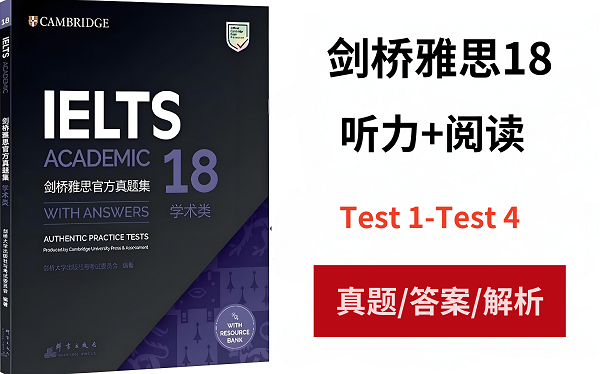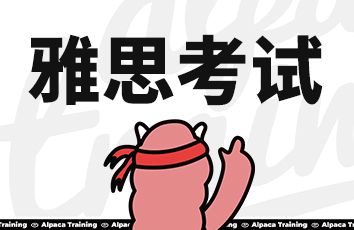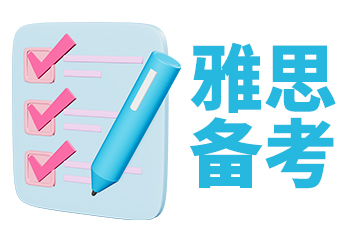剑桥雅思18阅读真题电子版Test3 Passage3
剑桥雅思18共收集了雅思真题4套,羊驼雅思整理了第三套阅读真题答案及解析Test 3 Reading,以下是阅读第三篇文章Passage3的文章原文,供烤鸭们复习参考。

剑桥雅思18听力和阅读真题答案及解析汇总查看剑桥雅思18真题答案解析汇总,为助力考生们备考雅思,羊驼雅思APP推出剑桥雅思真题及答案解析视频,可在羊驼雅思APP课程一栏获取剑雅系列视频信息。
READING PASSAGE 3
You should spend about 20 minutes on Questions 27-40. which are based on Reading Passage 3 below.
The case for mixed-ability classes
Picture this scene, It's an English literature lesson in a UK school, and the teacher has just read an extract from Shakespeare's Romeo andJuliet with a class of15-year-olds. He's given some of the students copies of No Fear Shakespeare, a kid-friendly translation of the original. For three students, even these literacy demands are beyond them. Another girl simply can't focus and he gives her pens and paper to draw with. The teacher can ask the No Fear group to identify the key characters and maybe provide a tentative plot summary He can ask most of the class about character development, and five of them might be able to support their statements with textual evidence.
Now two curious students are wondering whether Shakespeare advocates living a life of moderation or one of passionate engagement.
As a teacher myself, I'd think my lesson would be going rather well if the discussion went as described above. But wouldn't this kind of class work better ifthere weren't such a huge gap between the top and the bottom? If we put all the kids who needed literacy support into one class, and all the students who want to discuss the virtue of moderation into another?
The practice of 'streaming', or 'tracking', involves separating students into classes depending on their diagnosed levels of attainment, At a macro level, it requires the establishment of academically selective schools for the brightest students, and comprehensive schools for the rest. Within schools, it means selecting students into a stream'of general ability, or 'sets' of subject-specific ability. The practice is intuitively appealing to almost every stakeholder.
I have heard the mixed-ability model attacked by way of analogy: a group hike. The fittest in the group take the lead and set a brisk pace, only to have to stop and wait every 20 minutes This is frustrating, and their enthusiasm wanes.Meanwhile, the slowest ones are not only embarrassed but physically struggling to keep up. What's worse, they never get a long enough break. They honestly just want to quit. Hiking, they feel, is not for them.
Mixed-ability classes bore students, frustrate parents and burn out teachers. The brightest ones will never summit Mount Qomolangma, and the stragglers won't enjoy the lovely stroll in the park they are perhaps more suited to. Individuals sufer at the demands ofthe collective, mediocrity prevails. So: is learning like hiking?
The current pedagogical paradigm is arguably that of constructivism, which emerged out of the work of psychologist Lev Vygotsky. In the 1930s, Vygotsky emphasised the importance of targeting a student's specifc 'zone of proximal ievelopment’(ZPD). This is the gap between what they can achieve only with support teachers,textbooks, worked examples, parents and so on-and what they can achieve independently. The purpose of teaching is to provide and then gradually remove this scaffolding' until they are autonomous. If we accept this model, it follows that streaming students with similar ZPDs would be an efcient and effective solution. And that forcing everyone on the same hike -regardless ofaptitude -would be madness.
Despite all this, there is limited empirical evidence to suggest that streaming results in better outcomes for students. Professor John Hattie, director of the Melbourne Education Research Institute, notes that 'tracking has minimal effects on learning outcomes'. What is more, streaming appears to significantly and negatively-affect those students assigned to the lowest sets. These students tend to have much higher representation of low socioeconomic class, Less signifcant is the small benefit for those lucky clever students in the higher sets. The overall result is that the smart stay smart and the dumb get dumber, further entrenching the social divide.
In the latest update of Hattie's infuential meta-analysis of factors infuencing student achievement, one of the most signifcant factors is the teachers' estimate of achievement. Streaming students by diagnosed achievement automatically limits what the teacher feels the student is capable of. Meanwhile, in a mixed environment, teachers estimates need to be more diverse and fexible While streaming might seem to help teachers effectively target a student's ZPD, it can underestimate the importance of peer-to-peer learning.A crucial aspect of constructivist theory is the role of the MKO-'more-knowledgeable other'- in knowledge construetion,While teachers are traditionally the MKOs in classrooms, the value of knowledgeable student peers must not go unrecognised either.
I find it amazing to watch students get over an idea to their peers in ways that I would never think of, They operate with different language tools and different social tools from teachers and, having just learnt it themselves, they possess similar cognitive structures to their struggling classmates. There is also something exciting about passing on skills and knowledge that you yourself have just mastered-a certain pride and zeal, a certain freshness to the interaction between 'teacher' and 'learner' that is often lost by the expert for whom the steps are obvious and the joy ofdiscovery forgotten.
Having a variety of different abilities in a collaborative learning environment provides valuable resources for helping students meet their learning needs, not to mention improving their communication and social skills. And today, more than ever, we need the many to fourish - not suffer at the expense of a few bright stars, Once a year, I go on a hike with my class, a mixed bunch of students. It is challenging. The fittest students realise they need to encourage the reluctant. There are lookouts who report back, and extra items to carry for others. We make it - together.
参考译文
混合能力课程的案例
想象一下,这是英国一所学校的英语文学课,老师刚刚和一班15岁的孩子一起读了莎士比亚的《罗密欧与朱丽叶》的节选。他给了一些学生《无所畏惧的莎士比亚》的副本,这是原版的儿童友好翻译。对于三名学生来说,即使是这些识字要求也超出了他们的能力范围。另一个女孩根本无法集中注意力,他给了她笔和纸画画。老师可以要求无畏小组确定关键人物,并可能提供一个初步的情节总结。他可以向全班大多数人询问人物发展情况,其中五个人可能能够用文字证据来支持他们的陈述。
现在,两个好奇的学生想知道莎士比亚是主张过一种适度的生活,还是一种充满激情的生活。
作为一名教师,我认为如果讨论按照上述方式进行,我的课会进行得相当顺利。但是,如果上层和底层之间没有如此巨大的差距,这种阶级会不会更好?如果我们把所有需要读写能力支持的孩子放在一个班里,把所有想讨论适度美德的学生放在另一个班上?
“分流”或“跟踪”的做法涉及根据学生的诊断成绩水平将他们分成不同的班级。在宏观层面上,它要求为最聪明的学生建立学术选择性学校,为其他学生建立综合性学校。在学校内部,这意味着将学生分为“一般能力流”或“特定学科能力流”。这种做法直观地吸引了几乎所有利益相关者。
我听过用类比的方式攻击混合能力模型:集体远足。小组中最健康的人领先并设定了一个快速的步伐,但每20分钟就必须停下来等待一次。这令人沮丧,他们的热情也在消退。与此同时,速度最慢的人不仅感到尴尬,而且身体上也很难跟上。更糟糕的是,他们从来没有得到足够长的休息时间。老实说,他们只是想退出。他们觉得徒步旅行不适合他们。
混合能力课程让学生厌烦,让家长沮丧,让老师精疲力竭。最聪明的人永远不会登上珠穆朗玛峰,而掉队的人也不会喜欢在公园里漫步,他们可能更适合在公园里散步。个人屈从于集体的要求,平庸盛行。那么:学习就像徒步旅行吗?
当前的教学范式可以说是建构主义,它源于心理学家Lev Vygotsky的工作。在20世纪30年代,维果茨基强调了针对学生特定的“近距离发展区”(ZPD)的重要性。这是他们只有在教师、教科书、工作实例、家长等的支持下才能实现的目标与他们独立实现的目标之间的差距。教学的目的是提供并逐步拆除这个脚手架,直到它们自主。如果我们接受这种模式,那么分流具有相似ZPD的学生将是一种有效的解决方案。而强迫每个人都进行同样的徒步旅行——无论速度有多快——将是疯狂的。
尽管如此,有限的经验证据表明,流媒体对学生有更好的效果。墨尔本教育研究所所长约翰·哈蒂教授指出,“跟踪对学习成果的影响很小”。更重要的是,流媒体似乎对分配到最低组的学生产生了显著的负面影响。这些学生往往具有更高的低社会经济阶层代表性,对于那些幸运聪明的高年级学生来说,好处不大。总体结果是,聪明人保持聪明,愚笨人变得愚笨,进一步加深了社会分歧。
在Hattie对影响学生成绩因素的影响荟萃分析的最新更新中,最重要的因素之一是教师对成绩的估计。根据诊断出的成绩对学生进行流式传输会自动限制老师认为学生的能力。与此同时,在混合环境中,教师的估计需要更加多样化和灵活。虽然流媒体似乎可以帮助教师有效地针对学生的ZPD,但它可能低估了点对点学习的重要性。建构主义理论的一个关键方面是MKO——“更可认知的他人”——在知识建构中的作用。虽然教师传统上是课堂上的MKO,但知识渊博的学生同龄人的价值也不容忽视。
我发现看着学生们以我从未想过的方式向同龄人灌输一个想法是令人惊讶的,他们使用不同的语言工具和不同的社交工具,而他们自己刚刚学会,他们拥有与苦苦挣扎的同学相似的认知结构。传递你自己刚刚掌握的技能和知识也有一些令人兴奋的地方——一种自豪感和热情,一种对“老师”和“学习者”之间互动的新鲜感,这种新鲜感往往被那些步骤显而易见的专家所遗忘,而发现的乐趣也被遗忘了。
在协作学习环境中拥有各种不同的能力为帮助学生满足学习需求提供了宝贵的资源,更不用说提高他们的沟通和社交技能了。今天,我们比以往任何时候都更需要四旬以上的人,而不是以牺牲几颗明亮的星星为代价。每年一次,我和我的班级,一群混杂的学生一起去远足。这很有挑战性。适者意识到他们需要鼓励不情愿的人。有守望者报告,还有额外的物品供他人携带。我们一起成功。






